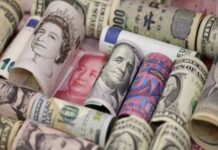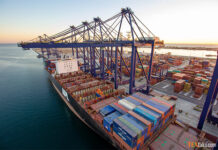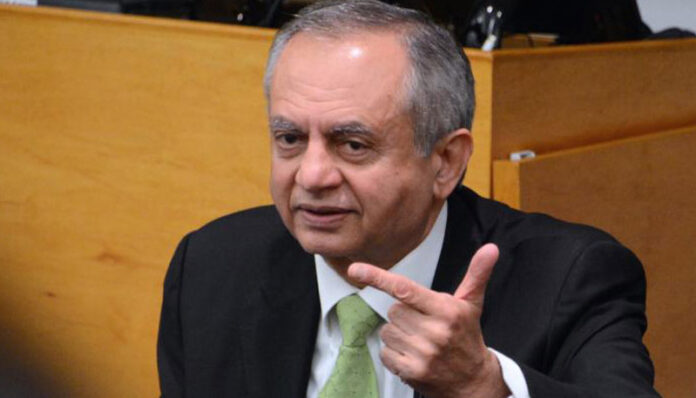ISLAMABAD: Adviser to Prime Minister on Commerce Abdul Razak Dawood on Wednesday lauded the unilateral tariff relaxation given by China under the second phase of China-Pakistan Free Trade Agreement (CPFTA) but said that Pakistan would be responsible in case the CPFTA-II fails to bridge the trade imbalances.
Addressing a seminar on CPFTA-II, which was organised by Trade Development Authority of Pakistan (TDAP) on Wednesday, the PM’s adviser claimed that it was now a joint responsibility of the government and business community to ensure the success of the second phase of FTA with China.
He said that the first phase of the free trade agreement was a failure as the agreement, which was apparently a badly negotiated deal, contributed to 34 per cent of Pakistan’s overall trade deficit in 2018-19. “There was no protection for Pakistani products under the previous deal that was signed in 2006, as the exports to China did increase but not as much as the imports, leading to Pakistan’s swelling trade deficit with the neighbouring country,” he said.
In the second phase of the free trade agreement, which was implemented on January 1, tariff on 313 products has immediately been abolished for Pakistan while a total of 75 per cent of the tariff lines will be liberalised over the next decade. The tariff concessions and facilities will significantly improve access to the Chinese market for Pakistani exports. A wide variety of products are covered under these concessional tariffs, including textiles, garments, seafood, meat, leather, chemicals, plastics and footwear. In addition, the free trade agreement has improved safeguard mechanisms for the protection of the domestic industry in Pakistan, introduced a safety valve against the future balance of payment crises, and included enforcement of electronic data exchange to avoid mis-declaration and under-invoicing of imports from China.
“Not only is the Ministry of Commerce responsible for the success of the new agreement but also the whole country and especially the business community,” Dawood said, adding that the exports had not been prioritised in the past. “Now the world’s largest import market, which happens to share a border with us, has provided us competitive access to the majority of its $2 trillion export market,” he added.
According to the adviser, the CPFTA-II will help Pakistan to come on a par with ASEAN states in the Chinese market, providing a huge opportunity in shape of tariff relaxation to the manufacturers, especially the garment sector, to enhance their export volume with the potential to grow 20 times. Dawood said that CPFTA Phase II can be weighed as better negotiated than the previous phase due to enhanced protection given to businessmen.
He said that unlike the exporters and traders of the world, the businessmen in Pakistan first try to make money from the domestic market. “There is a need to change the mindset of the traders if we want to improve our exports,” he added.
The seminar was attended by a large number of businessmen from Rawalpindi Chamber of Commerce and Industry (RCCI), Islamabad Chamber of Commerce and Industry (ICCI), Islamabad Women Chambers, major trade associations and export sectors of Pakistan, including agro-food, gemstones, jewellery, marble and stone, chemicals, etc.
Earlier the officials of Ministry of Commerce briefed the participants about the second phase of CPFTA, which offers an enhanced and deeper market access to Pakistan.
As per the official data the incumbent government, while contracting imports has drastically reduced the trade deficit during the past one year. From $22.16 billion in FY15, the trade deficit went up to $23.9 billion in FY16. The next two years saw the trade imbalance balloon to $32.58 billion and $37.58 billion. In FY19, the trade deficit was brought down to $31.82 billion.
However, the $5.76 billion reduction in the trade deficit was undergirded by the deceleration of economic growth from 5.5 per cent to 3.3 per cent and imposition of regulatory duties, resulting in a $6 billion fall in imports. As a percentage of gross domestic product (GDP), the trade deficit came marginally down from 11.9 per cent in FY18 to 11.2 per cent in FY19.
China has been the principal source of Pakistan’s trade deficit. In FY15, the trade deficit with China was $8.05 billion, which made up 36.31 per cent of Pakistan’s total trade deficit. In FY16, the trade imbalance rose to $10.44 billion or 43.67 per cent of the total trade imbalance.
The following two years saw the trade deficit enhance to $12.67 billion (38.39 per cent of the total deficit) and $14 billion (37.26 per cent of the total deficit). In FY19, the trade deficit with China came down to $10.89 billion, which accounted for 34.22 per cent of the country’s total trade deficit.
Thus, between FY15 and FY18, Pakistan’s trade deficit with China cumulatively increased by 74 per cent. During the same period, Pakistan’s overall trade imbalance registered a cumulative growth of 69.58 per cent. Thus, the growth in deficit with China outpaced that in the total deficit. In FY19, the trade deficit with China went down by 22.23 per cent while the overall deficit fell by 15.32 per cent. This means in both expansion and contraction the trade deficit with China outpaced the overall deficit.
























